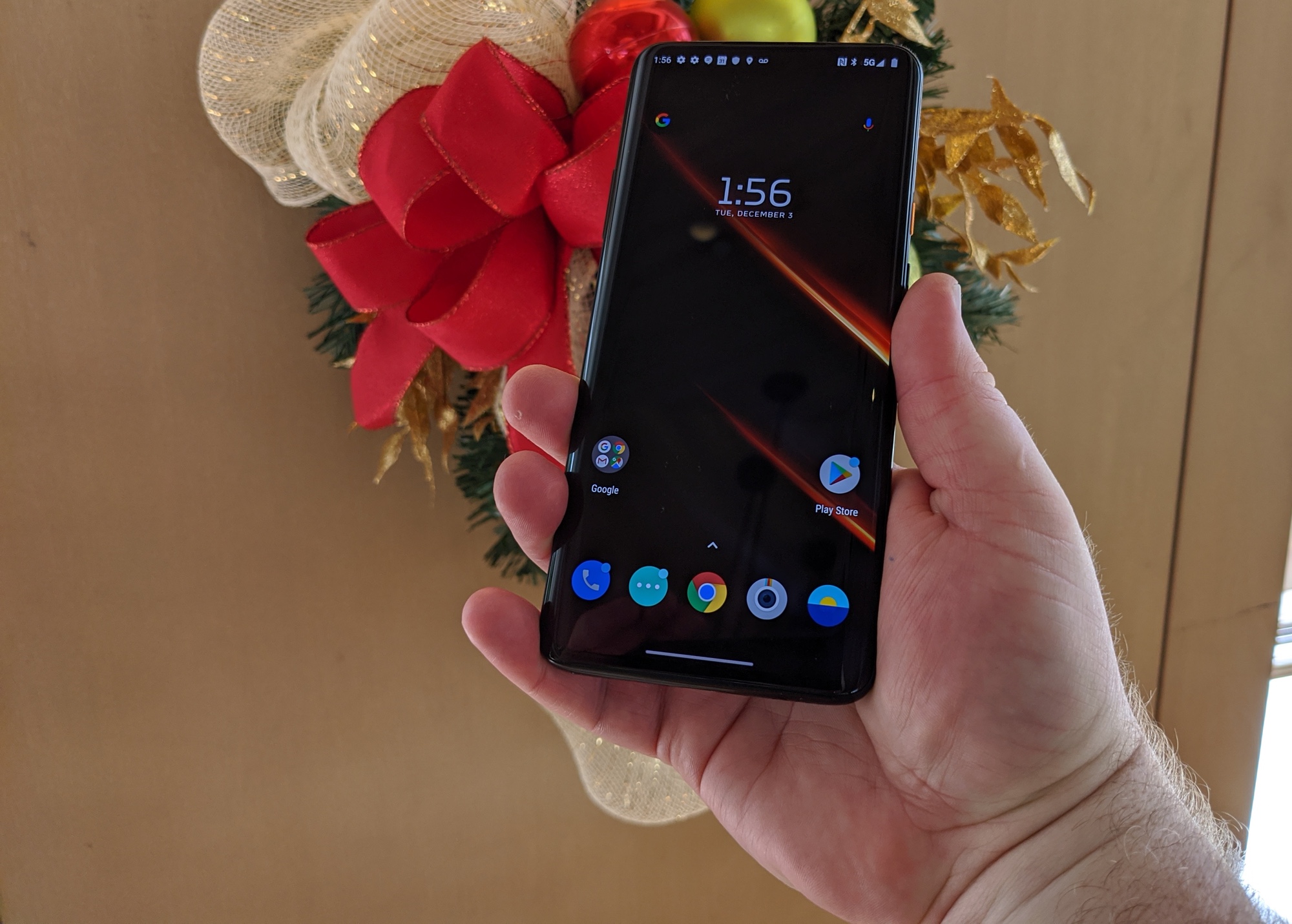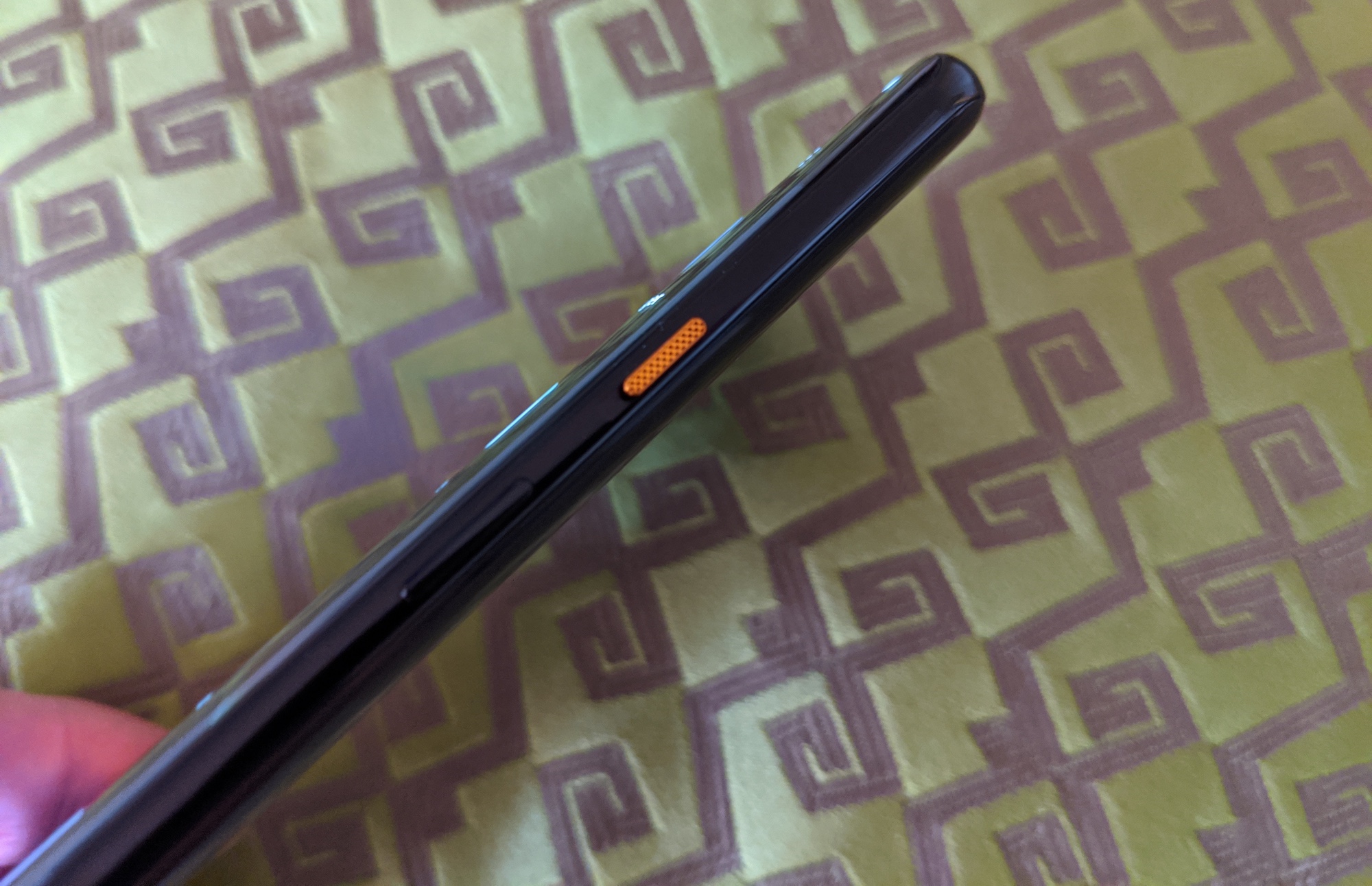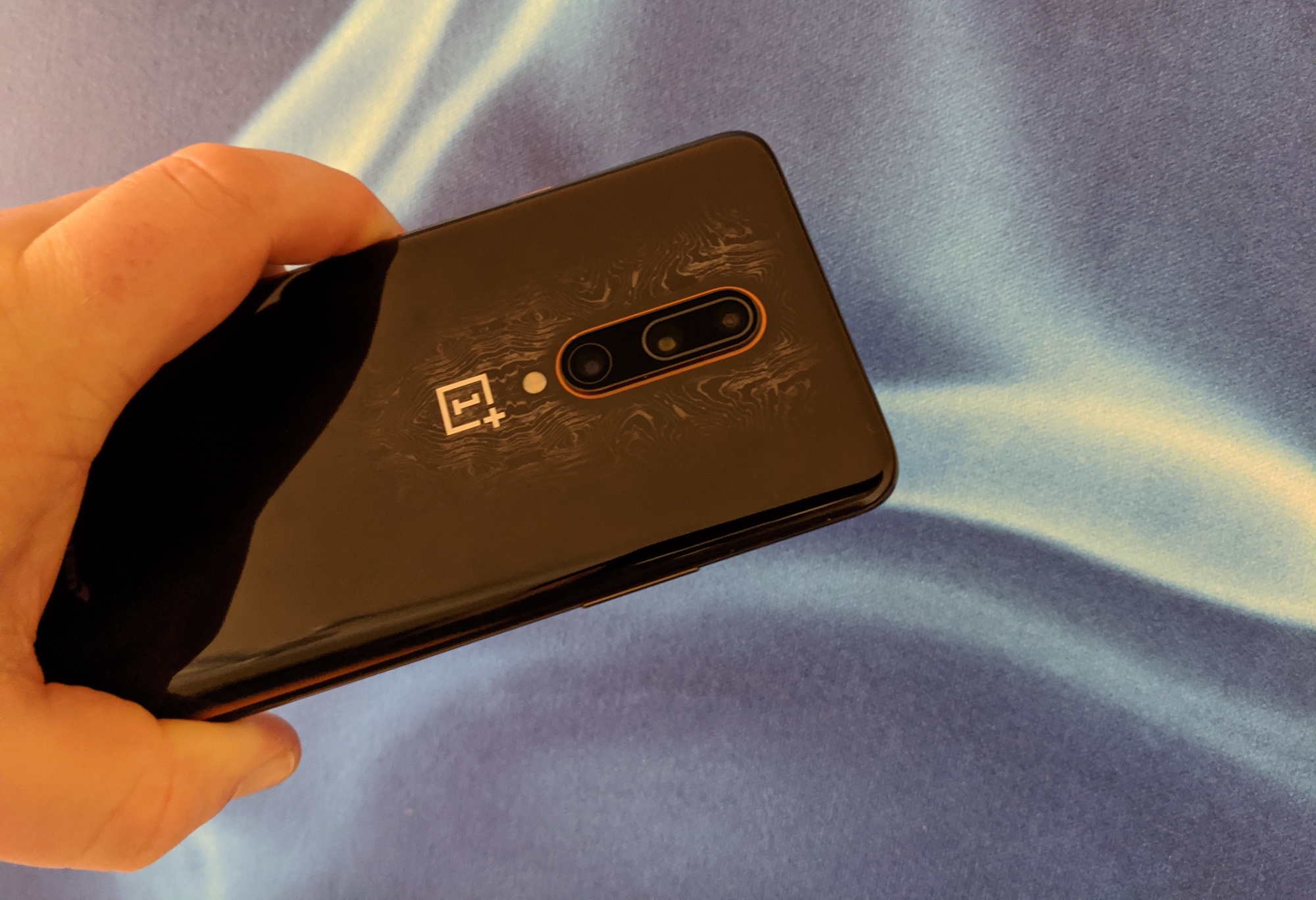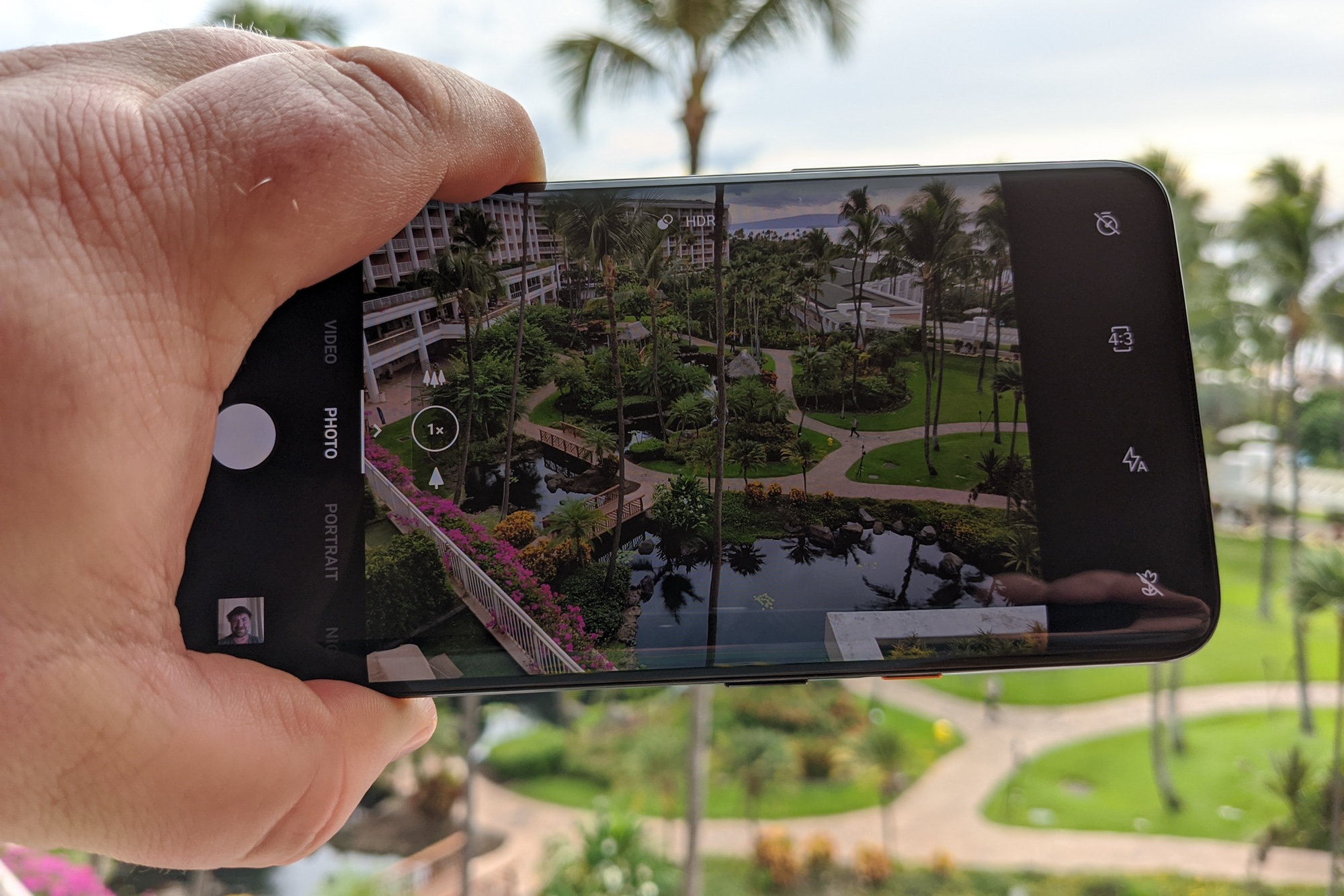Early Verdict
The OnePlus 7T Pro 5G McLaren can connect to T-Mobile's extensive 5G network, but the speeds aren't that much faster than LTE.
Pros
- +
Works on T-Mobile's nationwide network
- +
Outstanding performance
- +
Fast charging
- +
Display with 90-Hz refresh rate
- +
Sub-$1,000 price for a 5G phone
Cons
- -
5G speeds are only slightly faster than LTE
- -
No expandable storage
Why you can trust Tom's Guide
The great 1980s relief pitcher Dan Quisenberry once said, "I've seen the future, and it's much like the present, only longer."
He wasn't talking about T-Mobile's newly launched nationwide 5G network, but after spending the last couple of days taking that network out for a test drive, I think he could have been. The Uncarrier's 5G network is, in many ways, a lot like its existing LTE network — and that's both a compliment and a criticism.
First, the good news: If early 5G networks from other carriers have you thinking you're going to go on a wild-goose chase looking for a signal, T-Mobile's 5G is pretty widespread (and the carrier has the maps to prove it).
But on the other hand, if you're expecting the 1-Gbps speeds commonly associated with 5G, you're in for a rude awakening the first time you run a speed test (something T-Mobile is quick to admit).
Right now, two phones work with T-Mobile's 5G network: the Galaxy Note 10 Plus 5G from Samsung and the OnePlus 7T Pro 5G McLaren. It's that second phone that I've been testing, and to review OnePlus' 5G phone is to also evaluate T-Mobile's 5G network.
We need to run more tests on both the phone and the network before we can give a definitive verdict on either. But after several days of hands-on time with the OnePlus 7T Pro 5G McLaren, I have some initial impressions.
OnePlus 7T Pro 5G McLaren specs
| Price | $899 |
| Screen size (Resolution) | 6.67-inch Fluid AMOLED (3120 x 1440; 90Hz) |
| CPU | Snapdragon 855 Plus |
| RAM | 12GB |
| Storage | 256GB |
| Expandable storage? | No |
| Rear cameras | 48MP main (ƒ/1.6); 16-MP ultrawide lens (ƒ/2.2); 8MP telephoto lens (ƒ/2.4) with 3x optical zoom |
| Front camera | 16-MP pop-up |
| Battery size | 4,085 mAh |
| Size | 6.4 x 3 x 0.34 inches |
| Weight | 7.26 ounces |
OnePlus 7T Pro 5G McLaren price and availability
T-Mobile will start selling the OnePlus 7T Pro 5G McLaren this Friday (Dec. 6), although you can pre-order the phone right now.
Get instant access to breaking news, the hottest reviews, great deals and helpful tips.
You can get the OnePlus 7T Pro 5G McLaren for free from the carrier when you switch to T-Mobile and trade in an eligible phone. T-Mobile accepts the iPhone 8 or later through last year's iPhone XR/XS/XS Max, the Galaxy S9 or later, the Galaxy Note 9 or later, the Pixel 3 or 3 XL, this year's OnePlus 7 Pro or the the LG G8.
Otherwise, you can buy the phone from T-Mobile for $899 or in 24 monthly installments of $37.50 per month.
That $899 cost is noteworthy, because it's $400 less than what you'd pay for the other 5G-ready phone on T-Mobile's network, the Galaxy S10 Plus 5G. It's also just about what you'd pay for an LTE-based flagship phone these days.
The Pixel 4 XL costs as much as the OnePlus 7T Pro 5G McLaren, and the iPhone 11 Pro is $100 more. Pick up the 5G OnePlus phone, the argument goes, and you can get a device for the same cost as a regular flagship that can take advantage of 5G networks as they become more widespread.
OnePlus 7T Pro 5G McLaren and T-Mobile's nationwide 5G network
Then again, T-Mobile's nationwide 5G network is pretty widespread already, even with the carrier having only flipped the switch on at the start of December. T-Mobile 5G covers 5,000 U.S. cities, reaching 200 million people.
That coverage isn't just limited to the downtown area of major cities, but includes outlying suburbs and even some rural areas. That's a sharp contrast to what other carriers are doing; their 5G is concentrated in a handful of cities and usually only select neighborhoods.

The reason T-Mobile has such a far-reaching network is because of the technology it used to build out 5G. Its nationwide network is built on the low-band 600MHz part of the spectrum, and those signals travel farther than signals from millimeter-wave 5G networks such as Verizon's in the 18 cities where Verizon currently offers 5G coverage. (T-Mobile also uses millimeter-wave 5G in a half-dozen cities, treating its millimeter-wave towers as super-fast hotspots.)
The trade-off, though, is that while millimeter-wave 5G can exceed the 1Gbps download speeds commonly associated with 5G technology, low-band 600MHz 5G doesn't really come close. You'll typically see speeds a little bit faster than LTE, but not so much faster that it will blow your mind.
OnePlus 7T Pro 5G performance
T-Mobile says you should expect download speeds on its 600MHz 5G network that are 20% faster, on average, than what you'd see on its LTE network. Generally speaking, my test results, conducted in various spots around Wailea, Maui in Hawaii, topped that expectation.
Inside the open-air lobby of the hotel where I'm staying, I recorded a download speed of 152 Mbps on the OnePlus 7T Pro 5G McLaren, roughly 36% faster than the 112-Mbps download speed I recorded on the same spot using a Pixel 4 XL on T-Mobile's LTE network.
A half-mile away on the rooftop of a hotel, my 5G speeds increased to 195 Mbps on the OnePlus phone, a big jump from the 91-Mbps result I got on the LTE-based Pixel.
The eagle-eyed reader will note those numbers aren't anywhere near the 1-Gbps speeds you'd get on a millimeter-wave-based network (assuming you were in sight of a tower). Nor do they approach the speeds we've seen when we've tested Sprint's 5G network, which uses mid-band spectrum.
Indeed, at a local golf course a mile from my other test sites, the 5G speeds ranging between 25 Mbps and 53 Mbps were what I'd expect from LTE. In a handful of instances, usually when I was either indoors or surrounded by a lot of concrete, LTE speed-test results beat out the numbers I was seeing on the OnePlus 7T's 5G connection.

The advantage to T-Mobile's approach, though, is widespread availability. I didn't wander far around Wailea during my testing, but wherever I did go, I consistently saw that 5G logo in the upper-right corner of the OnePlus 7T's screen. It flickered back to LTE on only a few occasions.
From inside my hotel room, I got a steady 5G signal — and speedy 196-Mbps download speeds that outpace the 96-Mbps number I recorded over LTE — which would be very difficult for a millimeter-wave based network to pull off, given that signal's difficulty penetrating buildings.
And I did see some impressive results in real-world tests. It took me 3 minutes and 17 seconds to download the 1.84GB PUBG Mobile game from Google Play onto my OnePlus 7T Pro 5G McLaren. That same download took 4 minutes, 44 seconds on LTE with the Pixel 4 XL.
Launching Netflix, I downloaded a 24-minute episode of She-Ra to the OnePlus 7T in 32 seconds. That same download took more than 9 minutes on LTE.
I was even able to get all three hours and 29 minutes of The Irishman onto my 5G phone in 2 minutes, 47 seconds. In other words, I could download the Martin Scorsese movie over T-Mobile's 5G network 75 times in the same amount of time it would take watch the movie from beginning to end.
On LTE, I stopped the download after 10 minutes, with the file seemingly hung up on the last hurdle.
Is the lack of speed on T-Mobile's early network enough to stop you from getting a 5G phone now, even with the carrier promising that speeds will improve in the future (especially if the merger with Sprint goes through)?
That's a hard question to answer if we're talking about an expensive phone like the Samsung Galaxy Note 10 Plus 5G. But since the OnePlus 7T Pro 5G McLaren costs about the same as a flagship LTE phone, with the benefit of future-proofing built in, it's an easier pill to swallow.
You should also consider that you don't pay extra for 5G service at T-Mobile. It's included with the carrier's Magenta unlimited data plan, which costs $70 a month for a single line.
OnePlus 7T Pro 5G McLaren design and display
Apart from the 5G connectivity, this OnePlus phone shares a lot in common with the OnePlus 7T Pro we saw back in October. Like the 5G version T-Mobile sells, the standard OnePlus 7T Pro features a 6.67-inch AMOLED screen with 3120 x 1440 resolution. More importantly, you also get the 90-Hz refresh rate found on recent OnePlus phones that makes scrolling such a pleasure.
There's no notch or camera cutout to interrupt the screen. Instead, OnePlus uses a pop-up camera mechanism for the front shooter, leaving you with a screen-to-body ratio that tops 90 percent. It's a gorgeous display, though we'll need some time in the lab to determine just how bright it is and how accurate its colors are.

The look of this phone is one area where the OnePlus 7T Pro 5G McLaren departs from other OnePlus handsets. OnePlus has leaned hard into its partnership with the McLaren racing team to produced a phone that draws its design inspiration from the automotive world, right down to the etchings on the glass back of the black-and-gray handset that evoke oil swirls and skids.
Breaking up the largely monochrome color scheme is a papaya orange accent line in McLaren colors; I also like that the mute button replicates that orange color.
OnePlus 7T Pro 5G McLaren cameras
The same triple-lens camera setup that characterizes the back of the OnePlus 7T Pro appears on this 5G version. You get a 48-MP main camera that's aided by a 16-MP ultra-wide-angle shooter with a 117-degree field of view and a 12-MP telephoto lens capable of a 2x optical zoom.
The lenses are stacked vertically down the center of the OnePlus 7T Pro 5G, a welcome improvement from the circular eyesore that is the OnePlus 7T's camera array.

I didn't get the opportunity to test every camera feature during my hands-on time with the OnePlus 7T Pro 5G McLaren, such as the macro mode that lets you take detailed shots from as close as 2.5 centimeters. But while running around trying to get a 5G signal, I did get the chance to snap some photos with both this phone and a Pixel 4 XL.
OnePlus' phones have made great strides to improve their cameras, though they typically fall short of the best camera phones, like the ones Google makes. I'm happy to report that the OnePlus 7T Pro 5G McLaren provides the Pixel 4 XL with some pretty stiff competition.
The One Plus 5G's shot off the coast of Maui of sunset doesn't quite measure up to what the Pixel 4 XL can do. That sun proved too much a challenge for the OnePlus' cameras, and both sky and sea in the section of the photo get pretty blown out with lens flare appearing on the tree that pokes into the right side of the frame. The Pixel 4 handles the unforgiving glare a bit better for a more composed shot. That said, I think the OnePlus handled the plant life in the foreground with greater detail, and it's easier to make out the island of Kahoolawe in the background than it is in the Pixel's effort.
The Pixel 4 XL also does a better job when the lights are low, at least in the instance where I kept the night modes on both cameras off.
The light in the Pixel 4 XL's shot looks more natural, and as a result your eye is drawn to the tiki statue in the middle of the photo, which was my intention. You can also make out the textures of the faux rock used to make the idol.
The shot from the OnePlus phone bathes the background in too much ambient light, with a lamp in the back left casting too much glare. Some of the tiki details are lost in shadows, too — a problem that the Pixel 4 XL proves better able to handle.
The OnePlus 7T Pro 5G McLaren asserts itself in this picture of a plate of sliders. There's nothing wrong with either shot, although the Pixel gets a little too aggressive with blurring the background objects to draw attention to the food.
The colors are too muted in the Pixel 4 XL shot for my taste, while the OnePlus makes everything look more vibrant, especially the roasted Brussels sprouts tucked between two of the sliders.
Both phones did well when I shot a band giving a rooftop concert with the sunset in the background. I think the OnePlus struggles with the angle of the light here, resulting in clouds that are too dark and not terribly eye-catching.
The Pixel 4 XL doesn't have that problem, as the clouds are an appealing mix of blue, purple and yellow. Some of the colors and the foreground are a little too muted, but that only puts more focus on the sunset, which is where I'd want it to be in this case.
I thought when I zoomed in that the Pixel 4 XL would brush the OnePlus 7T Pro 5G McLaren aside. After all, the 3x zoom blows past the 2x optical zoom that both phones support, and the Pixel benefits from Google's Super Res Zoom feature that uses computational photography to keep optical zooms looking sharp.
While two of the three band members don't look as fuzzy as they appear in the OnePlus' shot, the poor guitarist on the right gets washed out of the Pixel 4 XL's image. That, plus the more vibrant colors captured by OnePlus' lenses, makes the OnePlus shot more appealing.
What about when that 16-MP selfie camera pops up on the OnePlus 7T Pro 5G McLaren to capture a self-portrait? Nothing to write home about, based on my testing.
The left side of my face feels a little out of focus, and there's a weird cast over the shot. I haven't been impressed by the front camera on the Pixel 4 XL, but it gives my skin a warmer tone, even if parts are overly smoothed.
OnePlus 7t Pro 5G McLaren performance
The OnePlus 7 Pro that arrived this spring used a Snapdragon 855 chipset. For this version, OnePlus upgraded to a Snapdragon 855 Plus processor. It's much like the standard Snapdragon 855, only this variation has been optimized for gaming, with performance enhancements for graphics.
OnePlus also packed 12GB of RAM into the 5G version of the phone; the standard OnePlus 7T Pro offers a more modest 8GB of memory.
That translates to some nice performance gains, at least based on some of the initial benchmarks we've had a chance to run on the phone.
Running Geekbench 5, which measures overall performance, the OnePlus 7T Pro 5G McLaren recorded a multicore score of 2,784. That just edges the 2,759 result turned in by the OnePlus 7T, which also benefits from a Snapdragon 855 Plus processor. Samsung's Galaxy Note 10 trailed both OnePlus phones, with a 2,640 multicore score.

It's in graphics where the OnePlus 7T Pro 5G McLaren really sees the benefit from that Snapdragon 855 Plus. On 3DMark's Sling Shot Extreme OpenGL ES 3.1 graphics test, this OnePlus model enjoyed a 6,207, ahead of the Note 10's 5,374 mark.
The OnePlus 7T Pro 5G McLaren also beat the graphic test scores of the Note 10 Plus (5,781), OnePlus 7 Pro (5,581), Galaxy S10 Plus (5,648), and iPhone 11 Pro Max (5,392).
You get 256GB of on-board storage with the OnePlus 7T Pro 5G McLaren, which is generous, though you can't augment that storage with a microSD card.
OnePlus 7t Pro 5G McLaren battery life
The OnePlus 7T Pro 5G McLaren features the same 4,085-mAh battery found in the standard version of the 7T Pro. We can't run a formal battery test until we've had a chance to measure the phone's brightness, as our Tom's Guide battery test sets screen brightness at 150 nits to ensure a level playing field. We then have the phones surf the web over a cellular connection until they run out of power.
I did run a web-surfing test on the OnePlus 7T Pro 5G McLaren just to get an idea of how long it might last, and the result was well below the average for smartphones. It's unclear whether that's because OnePlus' phones traditionally don't do well on our test — the OnePlus 7T turned in a below-average result — or the fact that 5G's slightly faster speeds are speeding up battery drain.
At least the OnePlus 7T Pro 5G McLaren charges quickly, thanks to OnePlus' Warp Charge 30T feature, which promises improved charge times. Specifically, OnePlus says you can get a fully drained phone up to around 68% battery capacity after 30 minutes of charging. My testing bore that out, as I got up to 70% in half-an-hour.
OnePlus 7t Pro 5G McLaren software
Phones released this fall by OnePlus have shipped with a version of the company's OxygenOS based on Android 10, and the 5G version is no exception. That's welcome news if you want your phone to be as up-to-date as possible.
You'll find the same special features and enhancements as before, such as a consistent system-wide Dark Mode, and Zen Mode, where you can temporarily disable some notifications and apps.

If you find the McLaren look to this version of the OnePlus 7T Pro appealing, you'll doubtless appreciate the clock on the lock screen that resembles McLaren's dashboard instruments. This phone also features some custom-made icons consistent with the McLaren theme.
In another feature brought over from other OnePlus models, the 7T Pro 5G has an in-display fingerprint sensor. If it lives up to what we've seen from other OnePlus phones like the 7T, the 7T Pro 5G's optical sensor should be pretty speedy at unlocking your phone.
Outlook
Whether the OnePlus 7T Pro 5G McLaren appeals to you will come down to whether you're willing to live with slightly-faster-than-LTE speeds for the sake of a more ubiquitous 5G network that figures to improve over time. The OnePlus 7T's low price (for a 5G phone) makes the modest performance gains easier to live with, especially if you're the sort of person who holds on to a phone for more than a year or two.
Otherwise, the OnePlus 7T Pro 5G McLaren offers the same advantages of most OnePlus handsets: flagship caliber performance, a gorgeous display and cameras that can hold their own.
We need to do additional testing before we can give a final verdict on this phone, but this 5G version of the OnePlus 7T feels like it's ideal for people ready for the future, even if that future remains a work in progress.
Philip Michaels is a Managing Editor at Tom's Guide. He's been covering personal technology since 1999 and was in the building when Steve Jobs showed off the iPhone for the first time. He's been evaluating smartphones since that first iPhone debuted in 2007, and he's been following phone carriers and smartphone plans since 2015. He has strong opinions about Apple, the Oakland Athletics, old movies and proper butchery techniques. Follow him at @PhilipMichaels.


